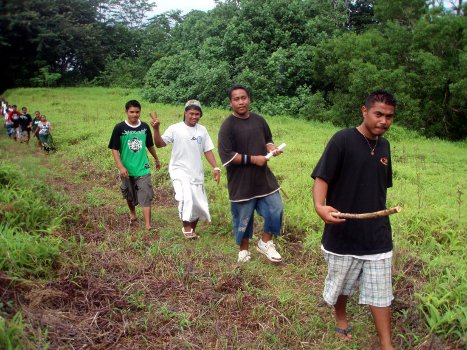
Up along the ridgeline
This term we examined Nostoc around the transformer in front of the LRC on the previous Thursday.
After a quick role and passing out syllabi to students who had been absent day one, the class was out the door by 15:38. Backpacks were stored in the supply closet for security.
Tuesday the class looked at moss on a nearby tree that also featured two types of lichens.
On the way to the trailhead the class stopped to examine Psilotum nudum located just to the south of the agriculture building in a hidden valley. This was a new addition to the hike spring 2009.

Up along the ridgeline
The class stopped on the ridgeline to view the lycopodium Lycopodiella cernua and the sun-loving fern Dicranopteris linearis. Lycopodium is a member of the division Lycopodiophyta, the ferns are members of division Pteridophyta.
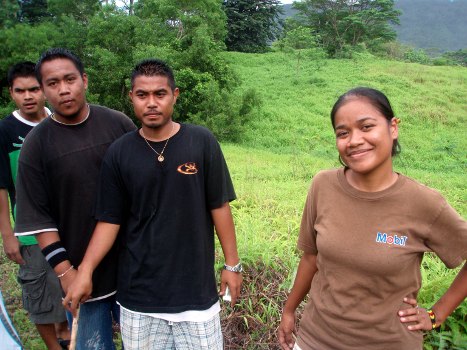
Tyson Elias, Mayleen Dungawin, among other students.
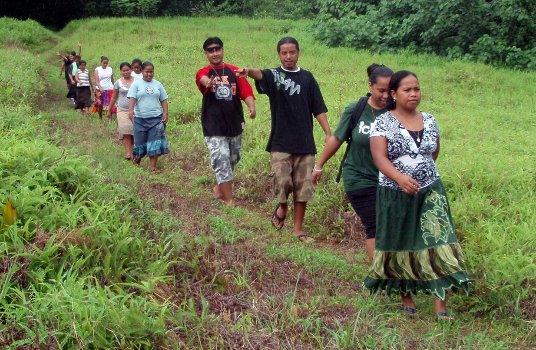
The rest of the class catching up along the ridgeline.
The class then paused at the top of the steep slope where Nephrolepis spp. and Thelypteris maemonensis were observed and discussed. Local uses and meanings of these plants was also discussed, along with names in the local languages. The local names for Microsorum scolopendria, its use as a mwarmwar, and the function the plant had as a mwarmwar in protecting the dancer from soumwahuen eni were covered. A plant known locally as marekenleng was located on a tree, this plant is currently listed in the virtual herbarium as Asplenium polyodon. Also found atop the steep slope was Davallia solida (ulung en kieil). The term devolution was introduced as meaning a loss of language and of culture. Asplenium nidus was encountered as we descended the slope.
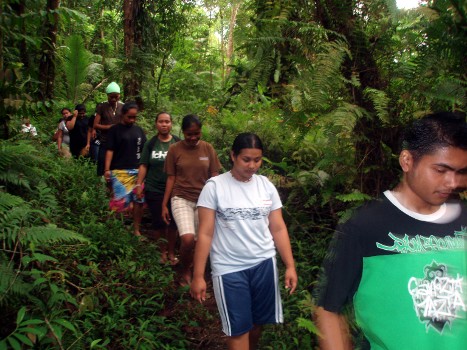
down-in-the-forest
Clambering down the slippery muddy slope, I located Vittaria on trees part-way down the slope.
Down in the forest I again found the epiphyte Huperzia phlegmaria. This term I did not locate the Psilotum complanatum, but I did find the Humata banksii on a different tree from the Huperzia phlegmaria. H. phlegmaria, however, appeared to be growing well both low and high on a tree off to the left. The mahrek en leng was still present both on the slope and in the valley.
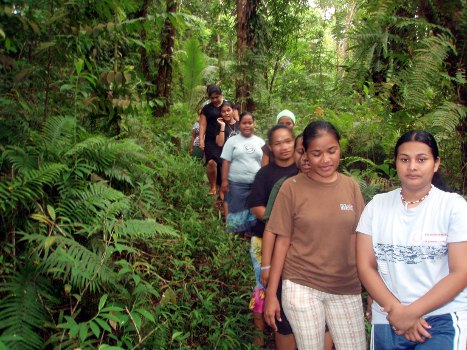
Mayleen and Roxcindelina
Father along the trail the class observed Cyathea nigricans.
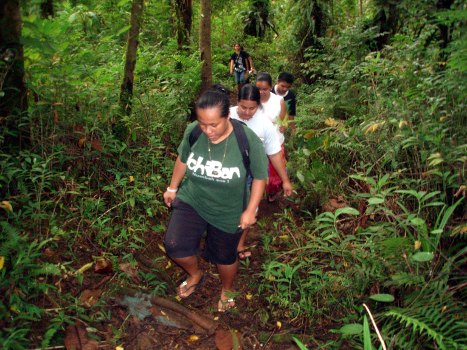
Maybeline Apwong
I then took the class down to the river and up to the Antrophyum plantagineum. We reached the A. plantagineum around 16:40. No one said that they knew its name, no one indicated that they had seen this fern before. I then took role and dismissed the class.